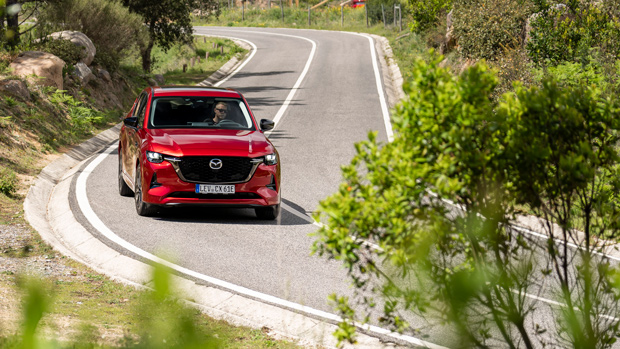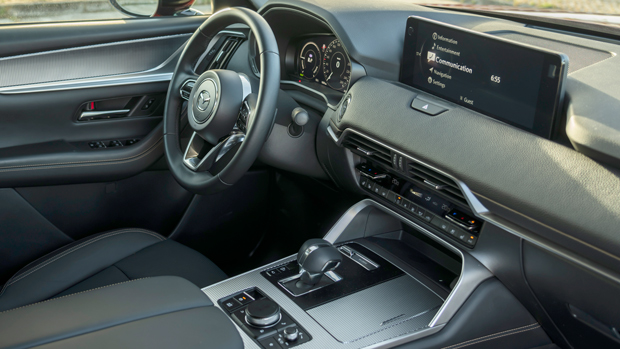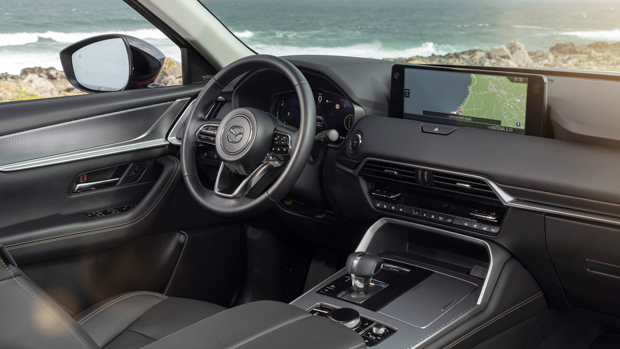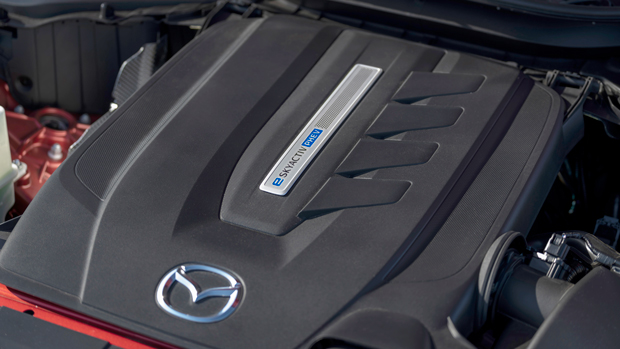-
Car Reviews
- All reviews
- Midsize SUVs
- Small cars
- Utes
- Small SUVs
- Large SUVs
- Large cars
- Sports SUVs
- Sports cars
- Vans
Latest reviews
- Car News
-
Car Comparisons
Latest comparisons
- Chasing Deals
Chasing Cars breaks down the five coolest things about the Mazda CX-60
The all-new CX-60 is a huge deal for Mazda – spearheading the brand’s push into premium territory. Not only is it the first model to feature a plug-in hybrid powertrain but it’s also the first-ever Mazda to feature straight-six petrol and diesel power.
Here are the five best things about the new Mazda CX-60 and parts of the car we are most looking forward to experiencing when we get to drive it.
ALL OUR MAZDA CX-60 REVEAL CONTENT:
To work best with its all-new ‘Multi-solution Scalable Architecture’ and more rigid body, the CX-60 features sophisticated double-wishbone front suspension and multi-link rear suspension “designed to enhance ride comfort and reduce road noise without negatively affecting handling or stability”.
The rear suspension uses metal ball joints in place of rubber bushes on the outer sides of the rear suspension to increase rigidity, which Mazda says more directly transfers balance to the outer rear wheel for enhanced cornering poise.
The CX-60 will also feature Mazda’s new Kinematic Posture Control (KPC) system that recently debuted on the 2022 MX-5.
The rear suspension is designed to oppose lift forces and draw the body downwards when the CX-60 brakes. KPC enhances these suspension characteristics by braking an inside rear wheel which adds further stability in high g-force situations, as well as reducing roll.
Mazda says that incorporating KPC in the CX-60 does not affect the weight of the car at all.
The all-new CX-60 is a much more screen-focused Mazda thanks to a Human Machine Interface (HMI) that incorporates a full-digital, 12.3-inch driving cluster, an oversized head-up display (three times larger than a CX-30’s) and a 12.3-inch central infotainment display that is both a touchscreen and can be controlled via Mazda’s MZD dial near the gear lever.
Intriguingly, however, the CX-60 also includes a driver personalisation system that incorporates three key features: automatic driving position guide, automatic setting restoration and ingress/egress assistance (by moving the steering wheel up and the seat rearward)
A camera built in the front seat detects the position of the driver’s eyes and can adjust the steering wheel, seat height, head-up display and door mirrors to match the driver’s eye position.
Automatic setting restoration uses facial recognition (and more than 250 stored adjustments and settings) to quickly adjust settings such as air conditioning, driving position and audio when a new person sits in the driver’s seat. The system can hold the preferences for up to six people.
Mazda wants the CX-60 to receive a five-star NCAP rating, and has therefore loaded it with necessary safety features.
New safety kit for Mazda includes a 360-degree monitor that uses four cameras to provide a ‘see-through view’ that enhances the obscured front and rear sections form the driver’s viewpoint, hill-descent control, vehicle-exit warning, and radar cruise control that can incorporate speed limits from the traffic-sign recognition.
The CX-60 also includes autonomous emergency braking (AEB) with cyclist and pedestrian detection, junction AEB, rear AEB with pedestrian detection, lane-keep assistance with steering assist, and drowsiness detection.
To protect pedestrians, the front of the CX-60 (including the front bumper face and bonnet) have been designed specifically to reduce pedestrian injury in an impact.
As well as three new powertrains, which include a plug-in hybrid 2.5-litre petrol four-cylinder offering 241kW/500Nm and 0-100km/h acceleration in 5.8sec, and two straight-six engines (petrol and diesel), the CX-60 will offer up to five ‘Mi-Drive’modes – normal, sport, off-road, towing and on the plug-in hybrid only, an EV mode.
Normal is intended to offer the best balance of fuel efficiency and driving performance, while Sport maximises the potential of the CX-60’s dynamic performance and ups the response from the powertrain.
Off-road mode brings together the all-wheel drive system, traction-control settings and other dynamic systems to provide better performance in rough terrain. ‘Off road traction assist’ offers help to drivers if they find themselves stuck.
Towing mode optimises the transmission for the increased weight change of the vehicle, while the AWD system is also optimised to make towing more stable. The plug-in hybrid CX-60 model has a braked towing capacity of up to 2500kg.
Finally, EV mode seems pretty self-explanatory, allowing the driver to drive the car under electric power only – perfect for a quiet inner-city commute when exploring the PHEV’s 60km of electric-only range at speeds below 100km/h.
Mazda will debut an all-new transmission with the CX-60. This time, it will introduce an eight-speed dual-clutch automatic transmission that “offers drivers smooth and responsive gear shifting with clear, smooth gear steps”.
Mazda says that the new dual-clutch shifts like a torque converter automatic (via planetary gears and multi-plate clutches) but has a multi-plate clutch (instead of an hydraulic converter) as an input clutch, as well as an integrated electric motor/generator.
Despite offering eight ratios instead of Mazda’s existing ‘SkyActive-Drive’ auto’s six gears, the plug-in hybrid CX-60 is doing just under 2000rpm in eighth gear at 100km/h, which is almost identical to what a 2.5-litre petrol CX-5 auto is doing in sixth.
This transmission will be standard across the Mazda CX-60 range.
Latest news
About Chasing cars
Chasing Cars reviews are 100% independent.
Because we are powered by Budget Direct Insurance, we don’t receive advertising or sales revenue from car manufacturers.
We’re truly independent – giving you Australia’s best car reviews.



